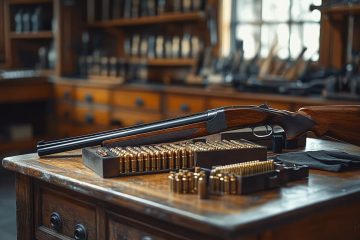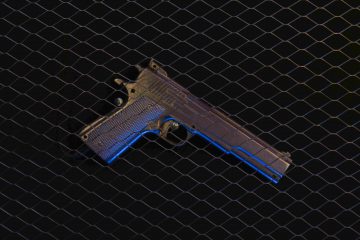At its simplest, a “gun” is any device that can be used to project force against a target, whether for sport, self-defense, or military purposes. In the context of competition, guns are typically firearms – pistols, rifles, and shotguns – although airsoft and paintball guns are sometimes used as well.
A “three-gun match” is simply a competition in which each competitor uses all three types of guns: pistol, rifle, and shotgun. This can be done with real firearms or with simulated guns like airsoft or paintball guns. Competitors must complete a variety of shooting challenges, often including targets at different distances and/or multiple targets. The goal is to test the competitor’s skills with all three types of guns.
The main format of 3-Gun Competition
There are many different formats for three-gun matches, but they all share some common elements. First, each competitor must have a holster for their pistol, a rifle case or bag, and a shotgun case or bag. Second, each stage of the match will typically have targets that must be engaged with each type of gun. For example, one stage might have paper targets at various distances that must be shot with the rifle; another stage might have clay pigeons that must be shot with the shotgun. Third, competitors are often required to move between stages, so a good pair of running shoes is also recommended!
Now that we’ve covered the basics, let’s take a more in-depth look at the sport of a three-gun competition. We’ll start with an overview of the different types of firearms and gear that are commonly used, then move on to stage design and execution.
Firearms and Gear
As we mentioned earlier, the three main types of firearms used in three-gun competitions are pistols, rifles, and shotguns. In terms of specific models, there is a huge amount of variety among competitors. Some use factory-standard guns straight out of the box, while others have heavily modified their guns for competition purposes. There is no “right” way to set up your gun – it ultimately comes down to what works best for you and your shooting style.
That said, there are some general guidelines that most competitors follow when choosing their firearms and gear.
First, the gun must be suitable for the type of competition you’re shooting. For example, if you’re competing in a match that requires a lot of running, you’ll want to choose a lighter gun that’s easy to carry.
Second, your gun should be reliable – you don’t want it to jam or otherwise malfunction in the middle of a match.
Third, you’ll want to choose ammunition that’s accurate and consistent. This is especially important for long-range rifle shots.
What are the basic rules of 3-Gun Competition
Now that we’ve covered the basics of firearms and gear, let’s move on to the rules of a three-gun competition. These vary somewhat from match to match, but there are some general guidelines that all competitors should follow.
First and foremost, safety is paramount. All guns must be treated as if they are loaded at all times, and all muzzle-loading disciplines must be followed.
Second, competitors must complete each stage within the time limit. This typically ranges from one minute to two minutes per stage.
Third, failure to engage a target will result in a penalty. This can be either time added to your score or points deducted from your score.
Fourth, shooting out of order – for example, shooting the pistol targets before the rifle targets – will result in a penalty.
Finally, any competitor who leaves the course of fire or otherwise fails to complete a stage will be disqualified.
With these basic rules in mind, let’s take a closer look at how a typical three-gun match is structured.
A typical three-gun match is divided into several stages, each with its own unique set of challenges.
Competitors must complete all stages within the time limit. The number of stages and the time limit vary from match to match, but most matches have between five and ten stages, with two minutes per stage being typical.
The goal of each stage is to test the competitor’s skills with all three types of firearms. For example, one stage might have targets that must be engaged with the rifle, another stage might have targets that must be engaged with the shotgun, and so on.
Scoring is typically based on time, with faster times being better. However, some matches also award points for each target hit.
The winner of a three-gun match is the competitor with the highest score at the end of all stages. So there you have it – everything you need to know about the three-gun competition! Whether you’re just getting started in the sport or you’re a seasoned veteran, we hope this guide has been helpful. Good luck out there and happy shooting!



0 Comments